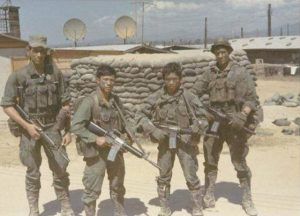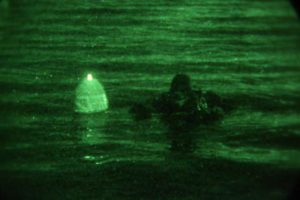Or, The Great Game in the One-N-Twenty, as the Shade of Sykes-Picot Rears Its Ugly Head
rev·e·nant
‘rev??näN,-n?nt/
noun
noun: revenant; plural noun: revenants
a person who has returned, especially supposedly from the dead.
Origin
early 19th century: French, literally ‘coming back,’ present participle (used as a noun) of revenir .
[Source – Google]
A walk down Memory Lane, because even with all eyes focused on Ukraine, China and the multiple, deepening scandals in the United States, there are other enemies who are still out there, enemies thought dead…but who are very much alive.
In the week preceding January 10, 2016, the conflict in war-torn Iraq and Syria entered a new, and extremely dangerous phase. To understand why, we need to dial back, and quickly review the last few years of the regional conflict.
In 2003, the United States invaded the Iraq of Saddam Hussein. The why’s and wherefores of the US invasion and conquest of Iraq aside, this seminal event is what sparked the state of affairs.
The origins of the Islamic State of Iraq and the Levant (ISIL) are shrouded in confusion and rumor, but it is generally agreed that it accreted from several sources, including the Jordanian-born Salafist radical Abu Musab al-Zarqawi, survivors of US detention camps, including their nominal leader Abu Bakr al-Baghdadi at the time, and a group of surviving officers of the disbanded Iraqi Army and the Iraqi Republican Guard Corps, with at least some funding, advice and moral support from the remnants of the Al-Qaeda organization.
However, it is vital to remember that ISIL’s initial wave of success, riding on the back of the confusion caused by the fallout of the so-called ‘Arab Spring’ uprisings, petered out in early 2013, and was only revived by under-the-table assistance from Turkey:
This allowed ISIL to operate from its territory, under the guise of supporting the anti-Assad “Free Syrian Army”. In looking over the date-progression in the animated map, above, it is absolutely clear that ISIL was using base areas in southern Turkey, unfettered by Turkish security forces.
Then, as Russian and Syrian government forces closed in on the FSA- and ISIL-controlled city of Aleppo, in the north of Syria, Turkey doubled down, intervening directly in the conflict, while chastising the US over its refusal to designate various factions of Kurdish ground forces as “terrorist organizations” – primarily because even the Presidential administration of Barack Obama had finally accepted that the Kurds were the one group that it could fully rely upon in the area, within their limits. As well, several Gulf Arab States, led by a Saudi Arabia currently eye-deep in a vicious ground war on its own southern border with Yemen, hinted that they, too, might attempt to intervene to prevent the total collapse of anti-Assad resistance.
For Turkey’s part, this is easy to understand. Turkey desires a much greater role in directing regional affairs, as was demonstrated in their active support for pro-Palestinian activists in the “Freedom Flotilla’s” of 2010 and 2014. Where Turkey erred was in assuming that it could secure its southern borders, as well as play ‘kingmaker’ in both Iraq and Syria, by supporting – however tacitly – groups such as the FSA, ISIL and the Al-Nusra Front, while ignoring its own Kurdish problem.
This, more than anything, is what undermined Turkey’s position: ethnic Kurdish areas comprise the southeastern one-third of Turkey’s territory, as Kurdish forces have coalesced over the last twenty-five or so years, and become far more professional militarily. Turkey’s adamant refusal to even consider negotiation with the Kurds brought it to the brink of war with Vladimir Putin’s Russia, as the Russian colossus ground away at the groups Turkey was supporting, and the US and Russia no longer simply provided aid to the Kurds, but are coordinating operations with them at some level.
The danger for Turkey, at this point, was abundantly clear: acknowledgement of Kurdish autonomy in Iraq or Syria would put pressure on Ankara to do likewise, and end its ongoing internal campaign against the Kurdish PKK in its southern region…in effect, this would severely weaken Turkey and ultimately result in its partition.
In threatening to intervene significantly in Syria – an intervention that, although left unspoken, would certainly bring Turkish and Russian military forces into direct conflict with each other – Turkey banked on its membership in NATO to deter Russia from taking any substantive military action against Turkey directly.
This was whistling past the graveyard, as Russia had already invested far too much to simply back away. That, in turn, left NATO, and the US, with the stark choice of abandoning a member-state, which risked destroying the alliance wholesale, or in actively aiding Turkey militarily, an action which would certainly lead to a general war — in other words, with no hyperbole, World War III.
This was headed off by cooler heads in NATO, who told Turkey flatly that Article V did not apply if Turkey was the original aggressor, which it most certainly was.
But what of the other players involved in this? Why are they rattling their sabres?
Saudi Arabia is divided. Internally, there are certainly factions within the Saudi power structure who actively support ISIL, as much as there are others who are adamantly opposed to the terrorist regime. However, Saudi Arabia is tasting, for the first time in a very long time, the addictive drug of military power with its intervention in Yemen. Appearing as a strong and powerful champion of Sunni Islam is seen as a vital necessity, due to the internal divisions within Saudi Arabia.
In the case of Iran, they have been at the “war thing” for several thousand years, and are quite competent, militarily speaking, when its ‘government du jour’ gives its military the chance to actually do the tasks that they are armed and uniformed to carry out. This is clear in Iran’s response to the threat to their fellow Shiites in Iraq.
In the map video above, ISIL’s strategic intent in Iraq can be discerned by watching the area around Baghdad: ISIL wisely did not attempt to actually storm the mega-city [1], but neither did they attempt to cut its road access. That it could have done so at any time should be painfully clear, but yet that did no act to do so. The reason for this seemingly-puzzling action – or lack of it – as the Iraqi Army was collapsing before the ISIL juggernaut.
[1] — Megacities In Future Operations
Iran saw that one of ISIL’s primary strategic goals was to goad them into sending in the Iranian army, the “Artesh”, to save Shia Iraq from ISIL. This would have resulted in ISIL calling on the wider Sunni world to wage its version of “jihad” against a group it hates worse than any other, as it views Shia Islam as a terrible heresy to its own beliefs, a heresy far more terrible and threatening to itself than other nations or religious faiths.
Instead, Iran sent the Quds Force, Iran’s “special operations” force. Sending in this very capable unit demonstrated Iran’s resolve, bolstered the flagging Iraqi Army, and required only a very tiny “footprint” on the ground.
This caught ISIL flat-footed, and at the end of its initial supply chain. At this point, ISIL fatally turned inward, trying to organize its rear areas, while getting as much equipment as possible from its suppliers, including Turkey.
This was an inevitably fatal move, because ISIL could not create the necessary internal infrastructure to support a modern military force in the absence of massive external aid – neither Iraq nor Syria were ever very heavily industrialized, and ISIL combat forces destroyed much of what heavy industries were present. Similarly, like the Taliban in Afghanistan, ISIL’s religious dogma severely limits its ability to create the vibrant defense industrial base without which it cannot win, in the absence of massive supply from a friendly foreign government.
Thus, the minute Russia injected itself into the conflict, essentially replicating what the US did in the early phases of its invasion of Afghanistan in 2001, ISIL and its allies – “moderate” and otherwise – appeared doomed, as there was no way that they could respond to precision Russian airstrikes.
Unless Turkey tried to intervene to aid them directly – and that was “a bridge too far” for Ankara.
The days of ISIL and its allies seemed to be numbered, as late as 2018…but, the Islamic State – like a poorly-treated cancerous growth – did not die out. Frayed nerves, along with poor decision-making and thought processes have allowed this regional conflict to metastasize into a world-spanning war, as happened almost exactly one hundred years ago.







